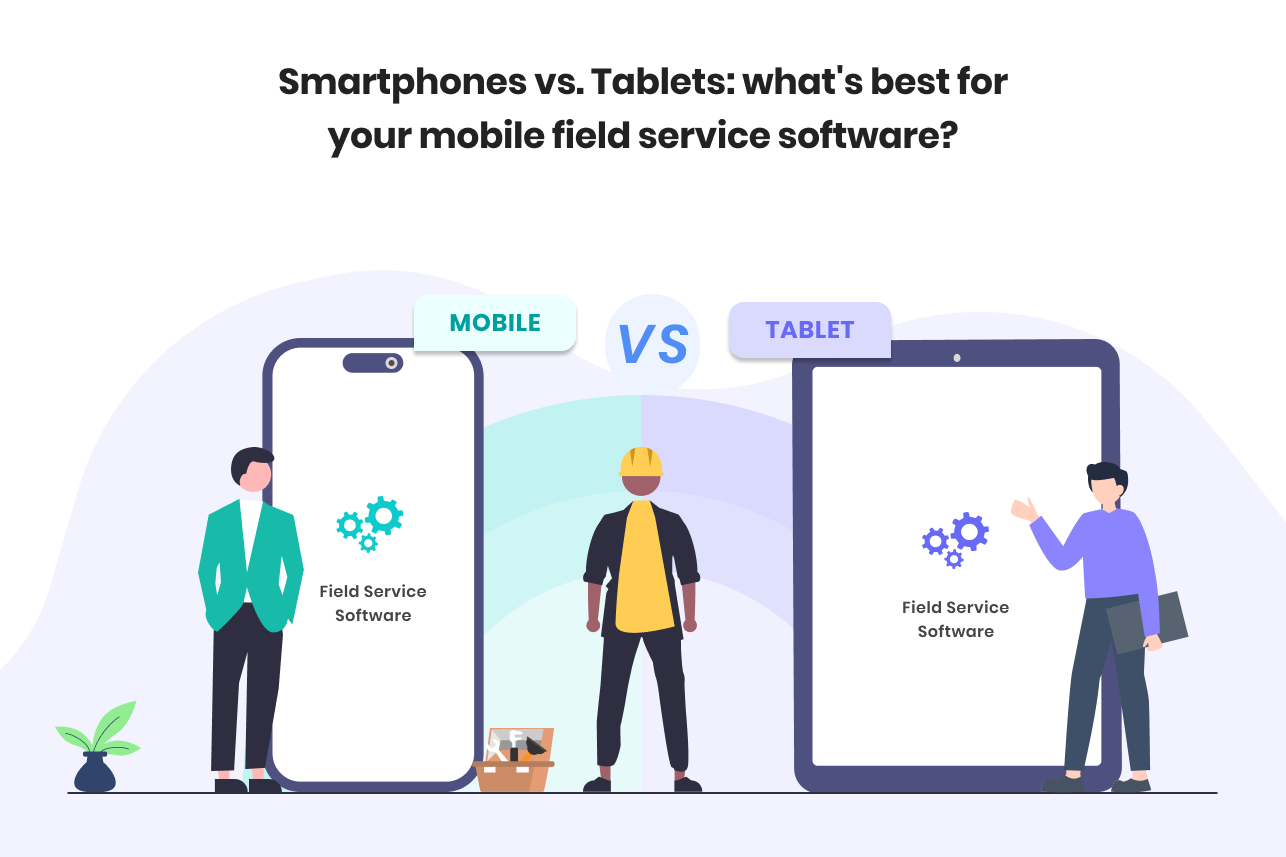Choosing between smartphones and tablets for your mobile field service software depends on various factors, and the decision should align with the specific needs and workflows of your field service operations. Here are some considerations for both smartphones and tablets:
Smartphones:
- Portability:
- Smartphones are more portable, making them convenient for technicians who need to move around frequently.
- Accessibility:
- Technicians can easily carry smartphones in their pockets, allowing quick access to the mobile field service software.
- Communication:
- Smartphones are versatile communication devices, allowing technicians to make calls, send texts, and stay connected easily.
- Cost:
- Smartphones are generally more cost-effective than tablets, which might be beneficial if you have a large team.
- Integration:
- Ensure that your mobile field service software is optimized for smaller screens, and all essential features are easily accessible.
Tablets:
- Screen Size:
- Tablets provide a larger screen, which can be advantageous for viewing detailed information, maps, or completing forms.
- Multitasking:
- The larger screen of tablets allows for better multitasking, enabling technicians to work on multiple tasks simultaneously.
- Enhanced User Experience:
- The larger display enhances the overall user experience, especially when dealing with complex data or visual elements.
- Form Completion:
- Tablets are often preferred for tasks that involve form completion, as the larger screen makes it easier to input information accurately.
- Durability:
- Some rugged tablets are designed specifically for field service environments, offering durability against harsh conditions.
Considerations for Both:
- Operating System:
- Ensure that your mobile field service software is compatible with the operating system (iOS, Android) used by the devices.
- Integration with Other Tools:
- Check how well the chosen devices integrate with other tools and technologies used in your field service operations.
- Training Requirements:
- Consider the ease of training technicians on the chosen devices. Familiarity and ease of use can impact the efficiency of your workforce.
- Budget Constraints:
- Evaluate your budget constraints and choose devices that offer the best value for your investment.
Ultimately, the best choice depends on the specific needs of your field service operations, the preferences of your technicians, and the software’s compatibility with the chosen devices. Some organizations even opt for a mix of smartphones and tablets based on different roles and requirements within their field service teams.
